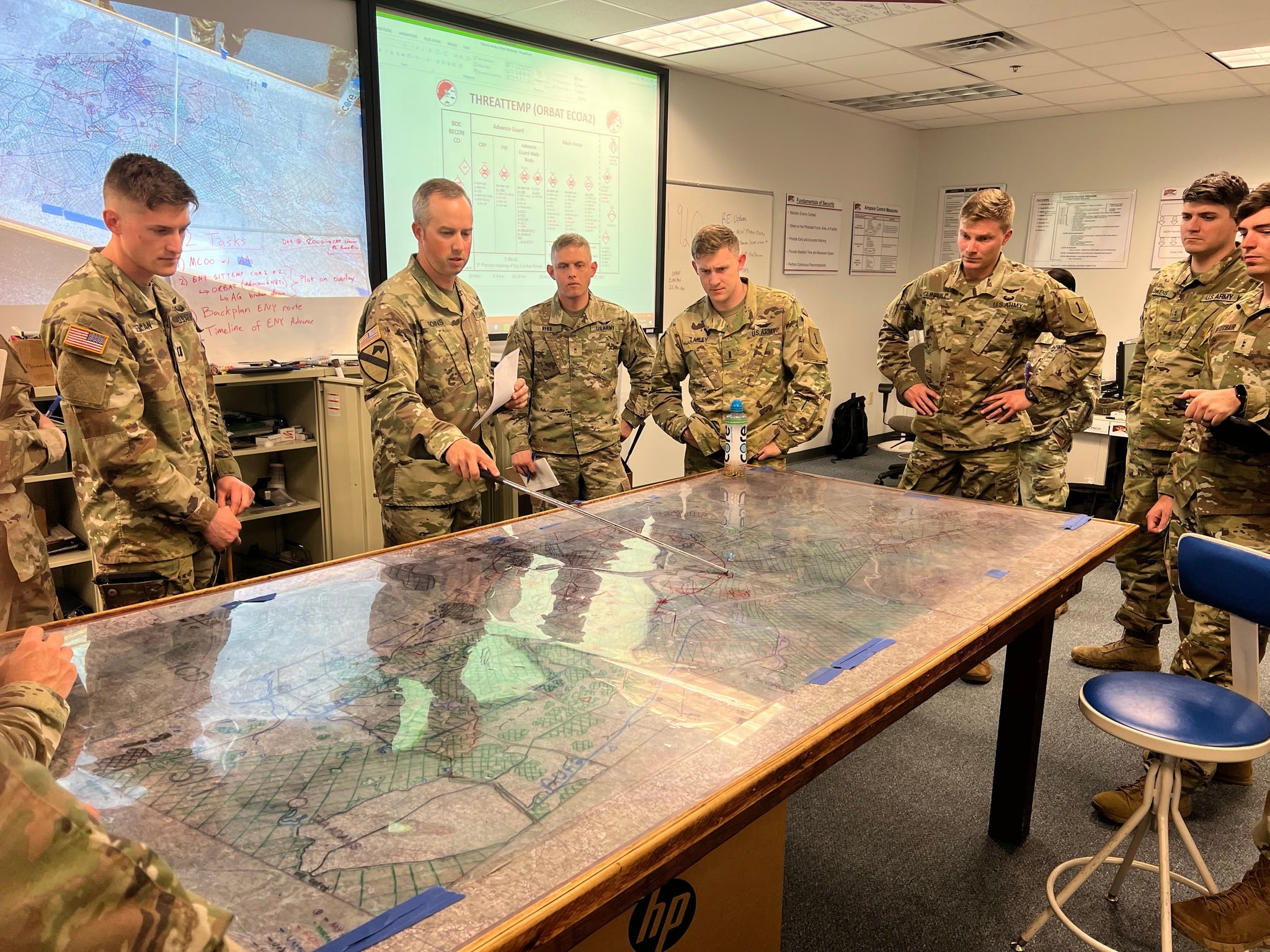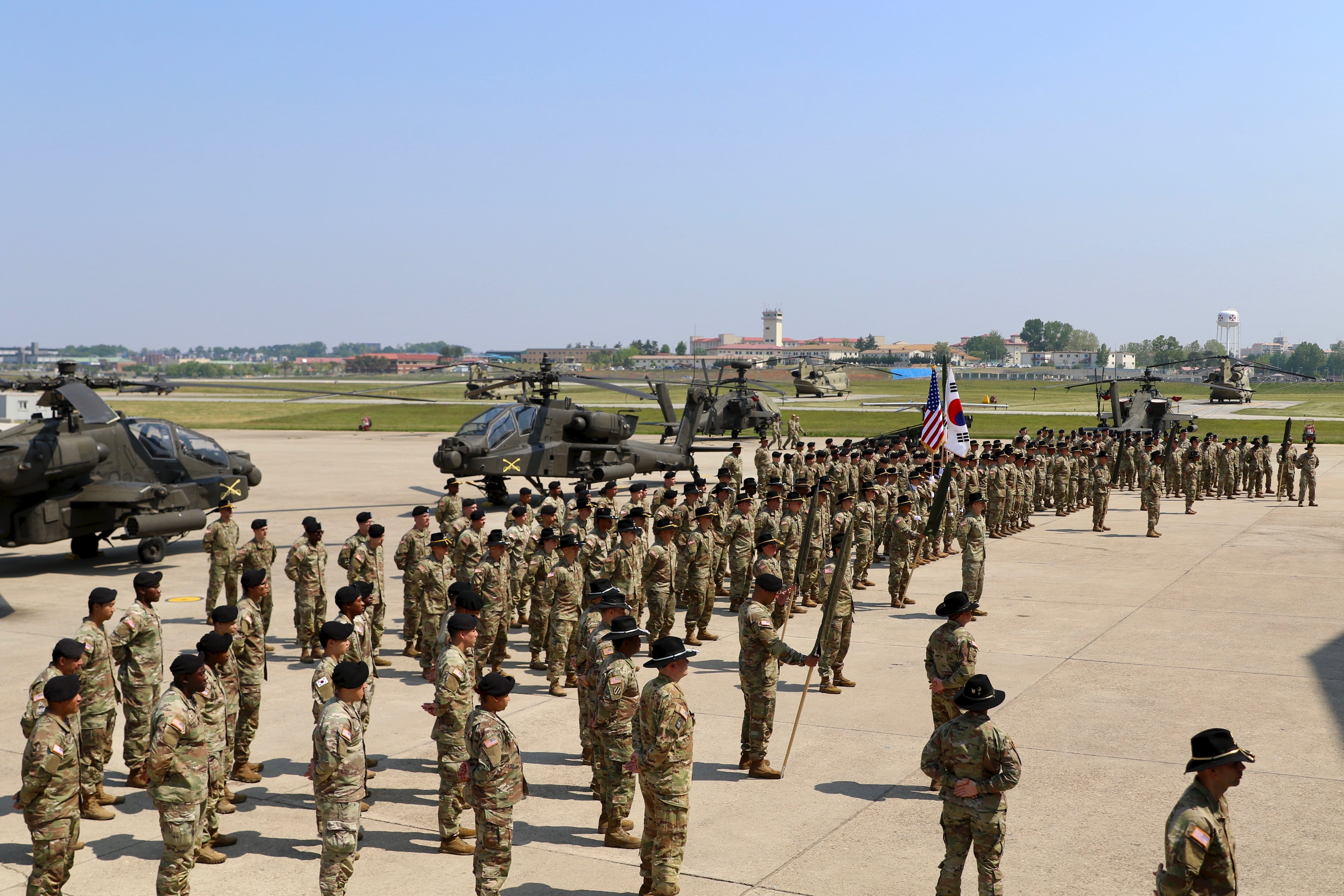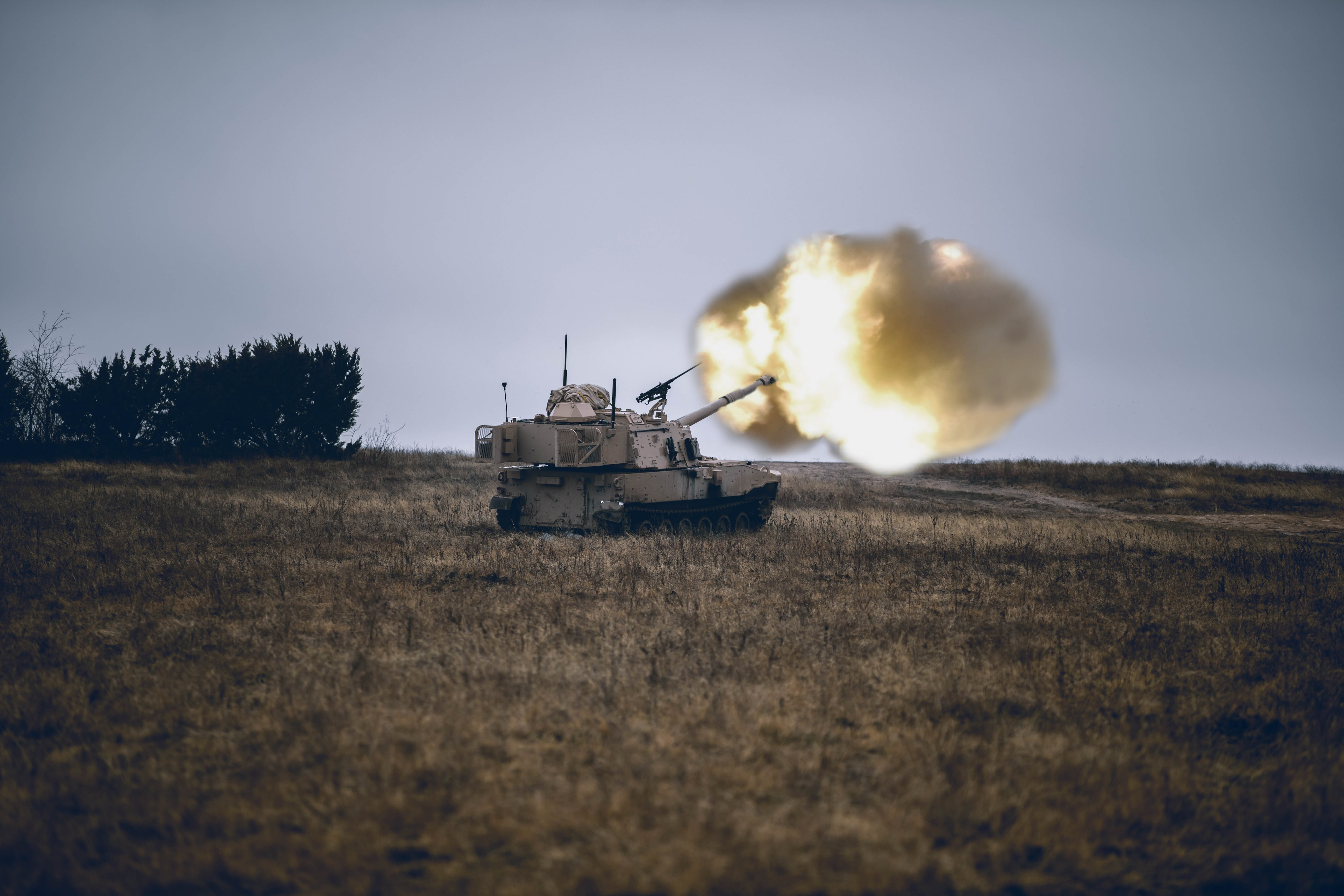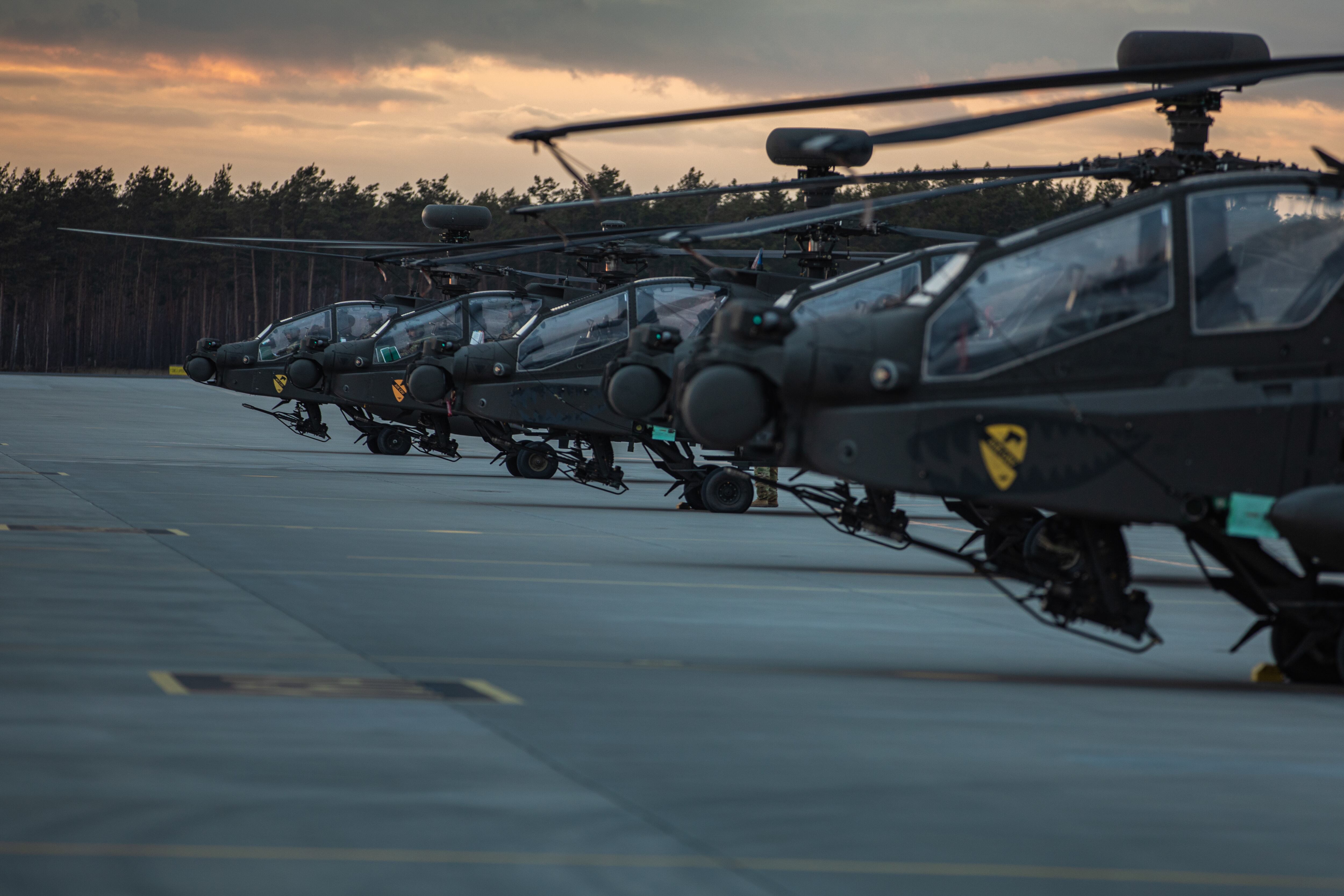FORT RUCKER, Ala. — Air Cav is back.
Aviation leaders were quick to remind Army Times that it technically never left, but throughout the Global War on Terror, the massed deep reconnaissance missions and raids that featured in air cavalry’s early years were largely relegated to Vietnam movies, set to Wagner.
But as the Army continues reworking its force structure and doctrine in preparation for a potential large-scale conflict with an adversary like Russia, China or Iran, air cavalry doctrine and units are coming back into vogue.
Russia’s invasion of Ukraine has also demonstrated the potential utility of deep penetration by helicopter-borne forces.
Russian airborne forces successfully took the strategic Antonov Airport, located near Kyiv and about 50 miles south of the Ukraine-Belarus border, in a daylight heliborne assault on Feb. 24. However, Russia ultimately failed to take Ukraine’s capital.
Then on April 1, a pair of Ukrainian attack helicopters made a daring raid into Russia, destroying an oil depot in the southern city of Belgorod. U.S. officials told CBS News that Ukraine carried out the attack, despite Kyiv’s reluctance to officially confirm it.
While the Army’s doctrine updates and changes to force structure have been years in the making, there’s been a sudden jump in interest, said Maj. Matt Clawson, who directs the Air Cavalry Leaders Course at Fort Rucker. The senior major, who has completed three company-level commands and received the Distinguished Flying Cross for a 2009 engagement in Afghanistan, spoke with Army Times in his office earlier this month.
Across the hallway, ACLC class 22-501 was underway — with an unprecedented wrinkle. The 1st Combat Aviation Brigade had booked all twenty seats in the class and picked up the training bill, because the commander believed in ACLC’s training and wanted his troops to jump the course’s lengthy waitlist.

ACLC was started in 2015 with the Army’s next war in mind, explained Clawson. The course’s sometimes-irreverent Facebook page makes light of its daunting mission — the Army used its Apache gunships as mobile fire support platforms rather than maneuver reconnaissance assets, and many senior aviators have never known any different.
Clawson wants to change that mindset and get back to the fundamentals of planning for reconnaissance and security missions supporting brigade- or division-level ground forces.
“In the past, in [counterinsurgency], you...show up to receive your operations intelligence brief that lasts for 30-45 minutes, do a pre-flight [inspection], check-in and go take off,” said Clawson. “Here, [the students] are doing 15 to 20 hours of planning in order to execute that one-hour mission. The [approach] has kind of gone back to the future, where it was during the invasion [of Iraq] in ‘03, or even Desert Storm.”
Students at the two-week course are tested on doctrine before they plan a series of air cavalry missions that they see from “cradle to grave,” as Clawson put it. They produce squadron-level plans and orders, wargame them all the way down to the platoon level, and then climb into aircraft simulators next door to execute their plans.
The course is intended for mid-career officers, senior warrant officers, and experienced unmanned aerial surveillance operators, said Clawson.
He said that one of the biggest shifts he’s seen since the outbreak of full-scale war in Ukraine is an increased “level of respect” for the course material from students for whom the course was previously just an exercise in doctrinal techniques that the Army hasn’t executed in decades.
“[Now] it’s not just us saying, ‘In theory these things would happen, as per these doctrinal references.’ Now they can watch live on TV,” Clawson added.
And as more officers trained at ACLC continue to advance in their careers, the Army itself is restructuring how and where it will employ air cavalry.
Structure shifts
The service is still in the process of adding more air cavalry assets and determining where and how to use them.
The 2nd Infantry Division gained a permanent South Korea-based squadron Tuesday when the 5th Squadron, 17th Cavalry Regiment reactivated at Camp Humphreys.
The unit will eliminate the need for other division’s air cavalry squadrons to rotate through the peninsula to serve as the 2nd ID’s air reconnaissance asset, said brigade spokesperson Capt. Frank Spatt in a release.

The new squadron will have around 500 troops and 24 AH-64E Apache helicopters, as well as unmanned aerial surveillance systems, according to Stars & Stripes.
Senior leaders are also considering new ways to build air cavalry assets into division-level cavalry squadrons alongside ground cavalry assets pulled up from the brigade level, where they currently reside.
A pilot program underway with the 1st Cavalry Division at Fort Hood, Texas, is exploring the concept of a 947-soldier division cavalry consisting of two air cavalry troops, an armored cavalry troop and support companies. It’s not clear whether air cavalry assets would be moved from the division’s aviation brigade to support the concept.
RELATED

The division commander, Maj. Gen. John B. Richardson, previewed the concept at a conference in February. He said the idea will evolve over several division-level exercises in 2023 before final decisions by the end of fiscal 2024.
The unit is meant to enable the division to conduct reconnaissance and maintain a security screen of up to 60 kilometers — all while serving as the commander’s “eyes and ears” in order to ensure they meet the enemy “on our terms,” Richardson said.
Clawson, the ACLC director, also sees significant potential for mixed ground and air cavalry for reconnaissance, though he acknowledged “a bit of a divide.”
“We’re working to nest [cavalry professional military education] together because it’s really one mission,” he explained.
Military Times editor-at-large Todd South contributed to this report.
Davis Winkie covers the Army for Military Times. He studied history at Vanderbilt and UNC-Chapel Hill, and served five years in the Army Guard. His investigations earned the Society of Professional Journalists' 2023 Sunshine Award and consecutive Military Reporters and Editors honors, among others. Davis was also a 2022 Livingston Awards finalist.




